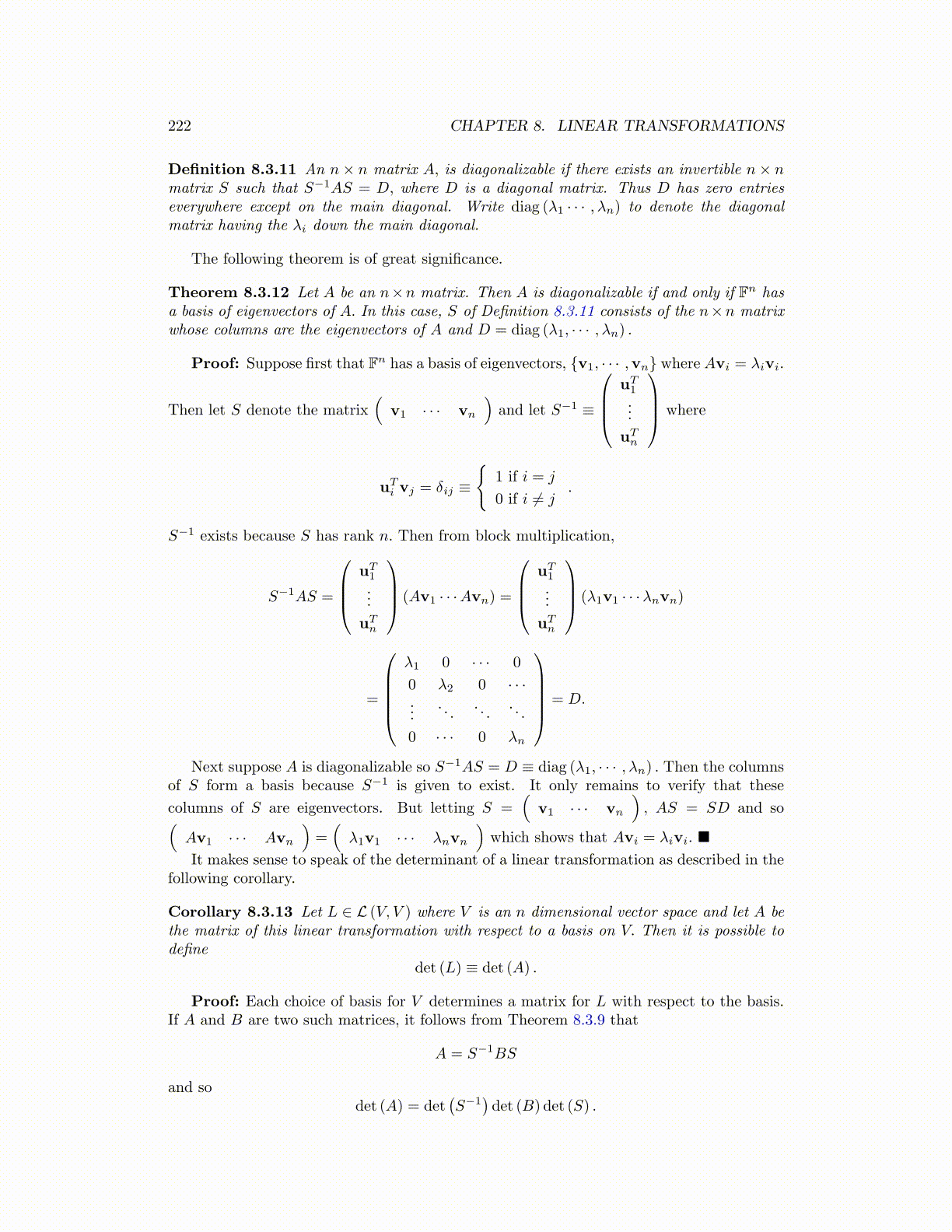
222 CHAPTER 8. LINEAR TRANSFORMATIONS
Definition 8.3.11 An n× n matrix A, is diagonalizable if there exists an invertible n× nmatrix S such that S−1AS = D, where D is a diagonal matrix. Thus D has zero entrieseverywhere except on the main diagonal. Write diag (λ1 · · · , λn) to denote the diagonalmatrix having the λi down the main diagonal.
The following theorem is of great significance.
Theorem 8.3.12 Let A be an n×n matrix. Then A is diagonalizable if and only if Fn hasa basis of eigenvectors of A. In this case, S of Definition 8.3.11 consists of the n×n matrixwhose columns are the eigenvectors of A and D = diag (λ1, · · · , λn) .
Proof: Suppose first that Fn has a basis of eigenvectors, {v1, · · · ,vn} where Avi = λivi.
Then let S denote the matrix(
v1 · · · vn
)and let S−1 ≡
uT1
...
uTn
where
uTi vj = δij ≡
{1 if i = j
0 if i ̸= j.
S−1 exists because S has rank n. Then from block multiplication,
S−1AS =
uT1
...
uTn
(Av1 · · ·Avn) =
uT1
...
uTn
(λ1v1 · · ·λnvn)
=
λ1 0 · · · 0
0 λ2 0 · · ·...
. . .. . .
. . .
0 · · · 0 λn
= D.
Next suppose A is diagonalizable so S−1AS = D ≡ diag (λ1, · · · , λn) . Then the columnsof S form a basis because S−1 is given to exist. It only remains to verify that these
columns of S are eigenvectors. But letting S =(
v1 · · · vn
), AS = SD and so(
Av1 · · · Avn
)=(λ1v1 · · · λnvn
)which shows that Avi = λivi. ■
It makes sense to speak of the determinant of a linear transformation as described in thefollowing corollary.
Corollary 8.3.13 Let L ∈ L (V, V ) where V is an n dimensional vector space and let A bethe matrix of this linear transformation with respect to a basis on V. Then it is possible todefine
det (L) ≡ det (A) .
Proof: Each choice of basis for V determines a matrix for L with respect to the basis.If A and B are two such matrices, it follows from Theorem 8.3.9 that
A = S−1BS
and sodet (A) = det
(S−1
)det (B) det (S) .